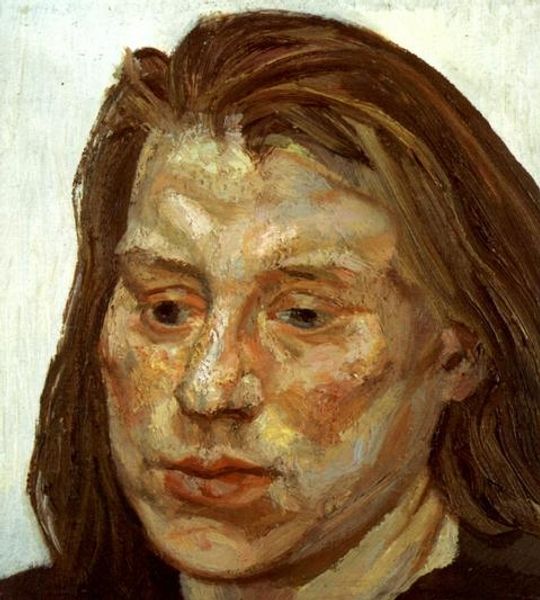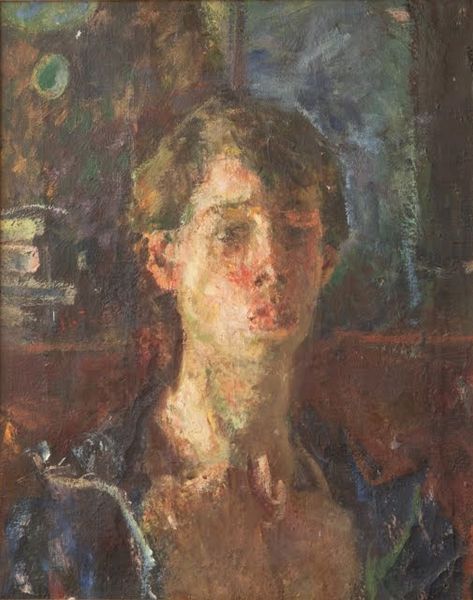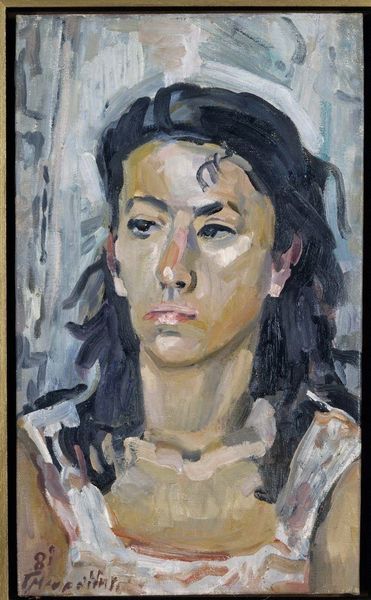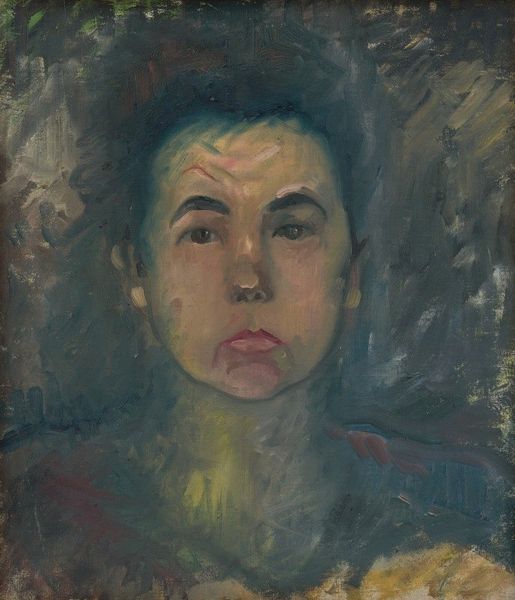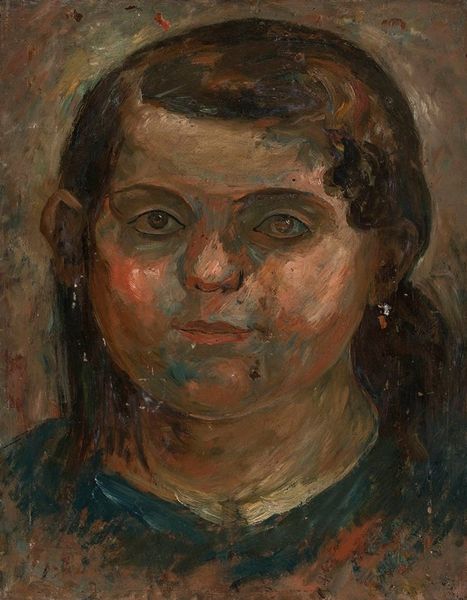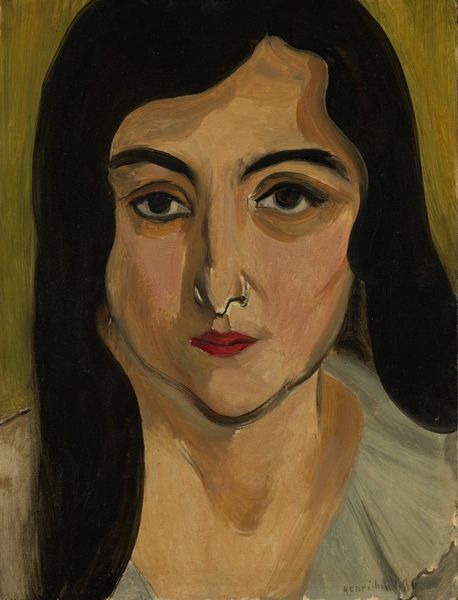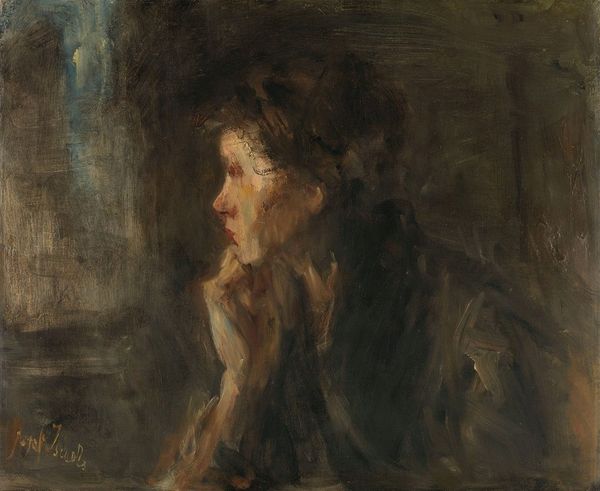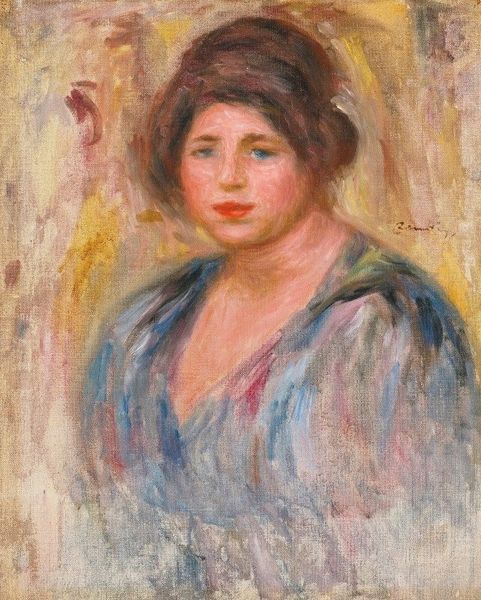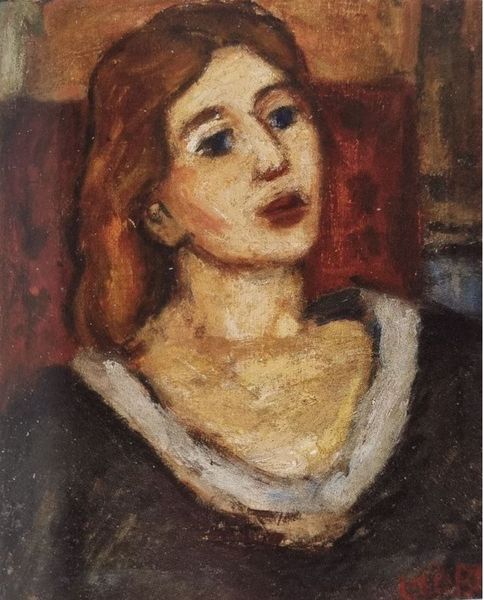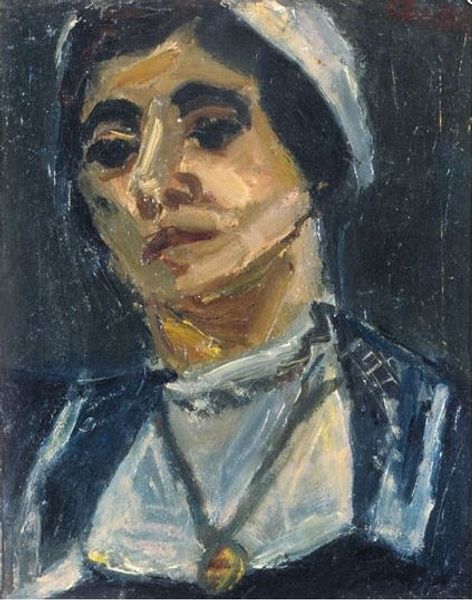
oil-paint, impasto
#
portrait
#
figurative
#
oil-paint
#
figuration
#
oil painting
#
impasto
#
portrait reference
#
post-impressionism
Copyright: Public Domain: Artvee
Editor: Here we have Van Gogh's "Head of a Prostitute", an oil painting, though the exact date seems unknown. I’m struck by how raw and unidealized she appears. The brushstrokes are so thick, you can almost feel his agitation, but her gaze is strangely calm. What do you see in this portrait? Curator: Beyond the visible brushwork, the impasto technique, consider what “prostitute” symbolized in Van Gogh’s time. It's not merely a profession, but a loaded signifier of societal margins, transgression, and female vulnerability. The symbol of the prostitute echoes themes present in religious iconography, consider Mary Magdalene, an allegory that raises profound questions about social perception and moral redemption. What feelings do you perceive beyond the paint? Editor: I guess I didn't immediately connect it, but her almost weary expression now feels more complex. Do you think Van Gogh was consciously drawing parallels between her and these religious figures? Curator: Perhaps consciously, perhaps intuitively. Artists often tap into collective visual memory. Observe how Van Gogh doesn’t shy away from her humanity. Instead, he immortalizes a subject often relegated to the shadows, giving dignity through the act of portraiture. Can the painting itself function as an icon of sorts, challenging the viewers assumptions? Editor: So the act of painting, of focusing attention, becomes a symbolic gesture? That makes me see it in a completely new way. Thanks! Curator: Precisely. Recognizing how the image is loaded and situated across cultures really highlights its richness, doesn't it?
Comments
No comments
Be the first to comment and join the conversation on the ultimate creative platform.
